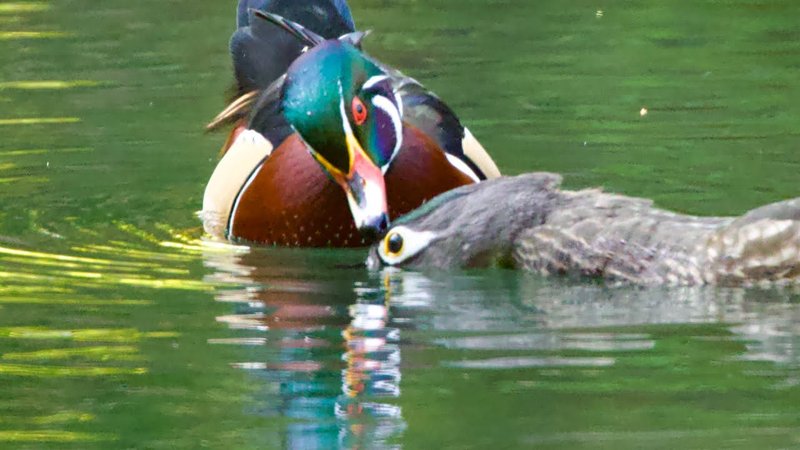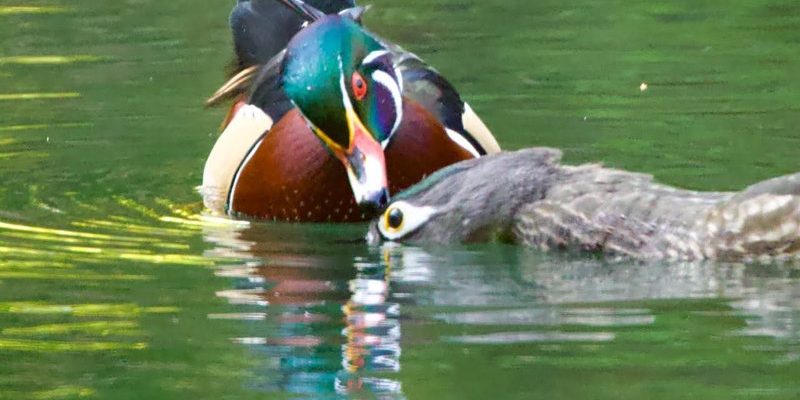
Wood ducks, known for their colorful plumage and striking beauty, have unique ways of wooing their mates. Imagine it’s a beautifully choreographed dance, where each step matters. Just like humans on a first date, these ducks have their ways of showcasing themselves, choosing partners, and setting the stage for parenthood. So, let’s dive into the whimsical world of wood ducks and explore how these charming birds court and mate!
A Brief Overview of Wood Ducks
Before we dive into their romantic lives, it’s essential to get to know wood ducks a bit better. Native to North America, these ducks are adored for their striking looks. Males sport bold colors, with iridescent greens, blues, and chestnut hues, while females are more subdued yet equally beautiful with their soft gray and white tones.
Wood ducks are generally found in wooded swamps, marshes, and ponds, where they can nest in tree cavities close to water. They’re often spotted perching on branches, which is quite a sight since most ducks prefer to stay on the ground. Their unique appearance and behavior make them a favorite among bird watchers and nature enthusiasts alike.
The Dance of Courtship
When it comes to finding a mate, wood ducks have an elaborate courtship ritual. Male wood ducks begin their courtship by displaying their vibrant colors and performing a series of *aerial dances*. They’ll flap their wings, bob their heads, and even call out to attract females. It’s a show that’s almost theatrical and certainly captivating.
During this display, the male may also engage in *”courtship swimming,”* where he swims in circles around the female, showcasing his plumage in the water. Here’s the thing: just like a romantic dinner date, this is all about impressing potential partners. The female closely observes the male’s performance and behavior, ensuring he is worthy of her attention.
The Importance of Grooming
In addition to performing these impressive displays, male wood ducks take grooming very seriously. They’ll clean their feathers to ensure they look their best. It’s similar to humans getting dressed up for a date—after all, first impressions matter! A well-groomed male can be more attractive and appealing, increasing his chances of winning over a female.
Once a pair of wood ducks has formed a bond, they’ll mate. Interestingly, mating can take place shortly after the courtship displays. Mating doesn’t take long—it’s a quick process! After mating, the female starts looking for a suitable place to build a nest.
Wood ducks are cavity-nesters, which means they prefer to lay their eggs in tree hollows, often near water sources. This is a great adaptation because it keeps the eggs safer from predators. The female will line the nest with soft materials, like feathers and moss, creating a cozy place for her eggs.
A female wood duck typically lays between 6 to 15 eggs, and once they are laid, she begins to incubate them. The incubation period lasts about 30 days. During this time, she’ll leave the nest occasionally to feed, but she’ll return quickly to keep the eggs warm. It’s an important job—keeping those eggs cozy is key to ensuring their little ones will hatch strong and healthy.
After the eggs hatch, the parenting duties kick into high gear. What’s fascinating about wood ducks is that, once the ducklings are born, they are incredibly precocious. Almost immediately, the female encourages them to leave the nest and jump down to the ground. This might sound risky, but it’s a necessary step for survival.
Once on the ground, the ducklings head straight to the water with their mother, who will guide and protect them. This is quite different from many other bird species, where the parents would stay with the chicks in the nest for a more extended period.
The female wood duck continues to protect her ducklings while also teaching them how to forage for food. It’s a busy time, and she’ll have to be vigilant against potential threats like predators. Honestly, it’s like being a single parent in a bustling neighborhood—it takes careful planning and quick reflexes!
While the female does most of the parenting, the bond between mates is an interesting aspect of wood duck relationships. Unlike many species, wood ducks often form strong pair bonds that may last for more than one breeding season. These connections can help them work together more effectively when raising their young, even if the male doesn’t stick around as closely after the initial mating.
You might be wondering what happens when the breeding season ends. After caring for their ducklings, wood ducks usually go their separate ways until the next mating season. This cycle of courtship, nesting, and raising young is a beautiful example of nature’s balance.
Like many wildlife species, wood ducks face their share of challenges. Habitat loss, pollution, and hunting have had significant impacts on their populations. Thankfully, conservation efforts have been in place to protect these birds.
Preserving wetlands and wooded areas where wood ducks nest is crucial. Many organizations focus on creating safe habitats, which helps sustain the populations of these stunning ducks. Just as we would protect our parks and nature reserves, conserving wood duck habitats is vital for their survival and for future generations to enjoy.
The courtship and mating rituals of the wood duck are a beautiful testament to the complexities of nature and animal behavior. From dazzling displays to nurturing parenting styles, these ducks have a lot to teach us about love, connection, and survival.
Whether you’re an avid bird watcher or just starting your journey into the world of wildlife, the wood duck’s romantic escapades are sure to capture your heart. Next time you spot a wood duck gliding through the water or perched majestically in a tree, remember the incredible story of love, family, and resilience that lies behind their vibrant feathers.

